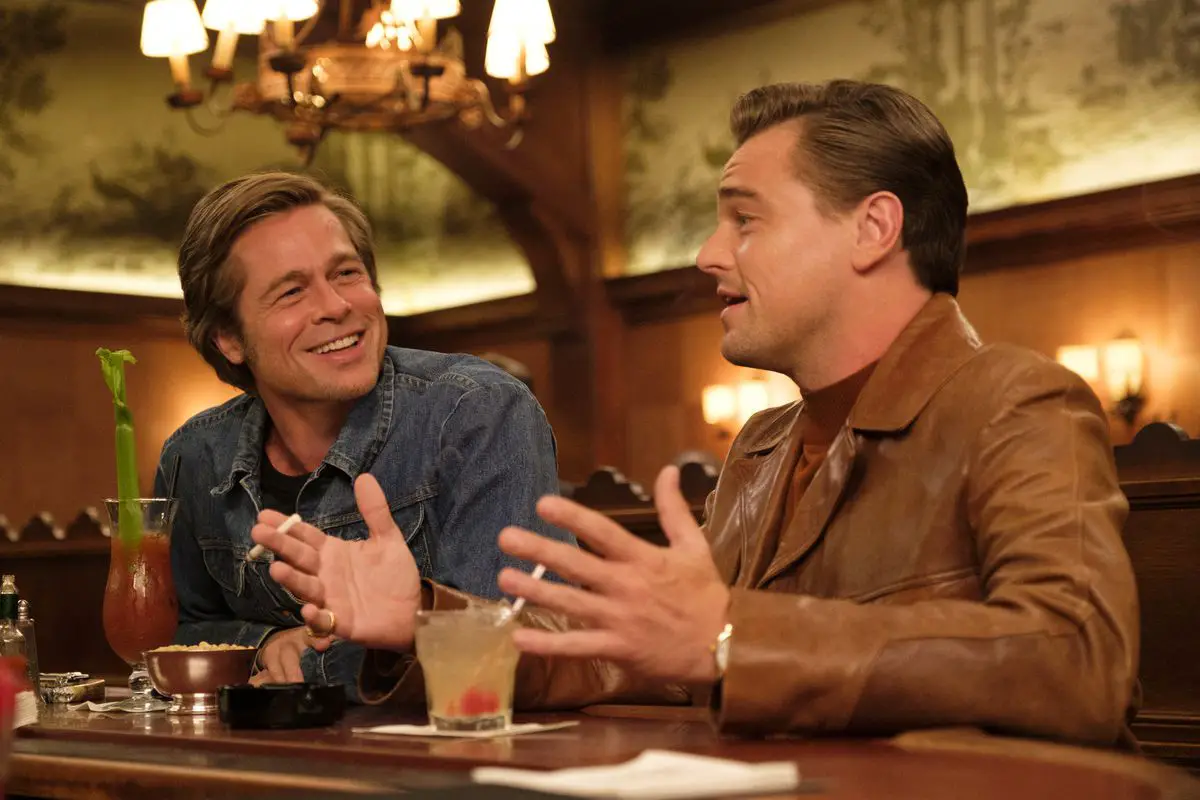Imagine receiving a seven-minute standing ovation. Seven minutes of nonstop clapping and overwhelming appreciation. Well, Quentin Tarantino received just that at this year’s Cannes Film Festival for his ninth and latest film, “Once Upon a Time … in Hollywood.”
The film turned out to be the director’s best and biggest opening weekend ever, hitting $40.4 million in ticket sales between the United States and Canada. Fans and critics have given it many glowing reviews.
However, some say the film is too long or just doesn’t live up to the director’s other classic films. Here’s what I think: I’ve seen it twice already.
The story takes place in 1969 Hollywood, California. The film is Tarantino’s fictional twist — inspired by true events — on the Charles Manson murders in 1969, although the story is not completely focused on Manson as a character.
Instead, it focuses on has-been Hollywood actor Rick Dalton (Leonardo DiCaprio), an alcoholic who can’t seem to get a grip on the reality of his life and career. Cliff Booth (Brad Pitt), who works not only as Rick Dalton’s stunt double but also his personal chauffeur, is his right-hand man. Dalton and Booth work together to find their next big break in the ever-changing film industry during Hollywood’s prime.
The film opens on screen-grabbing cowboy Dalton shooting evil desperados and collecting his bounties. The opening and overall Western aesthetic of the fictional show in which DiCaprio stars, “Bounty Law,” gives a nostalgic homage to classic Western series like “Gunsmoke” and “Bonanza.”
Whenever Dalton is in action, an aesthetic square-like television border appears, the screen gets grainy and the audience feels transported to a 1960s living room, watching the latest episode while sitting on some shag carpeting.
As the film goes on, Dalton learns that he isn’t who he used to be as an actor, coming to terms with a type of mid-career crisis. Because Booth is a stunt man and doesn’t receive the type of attention a screen actor receives, he does not have the same type of pressure and insecurities DiCaprio’s character projects. The dynamic duo are the ultimate best friends, who just so happen to be at the right place at the wrong time.
DiCaprio and Pitt are electric and have such incredible chemistry on screen. The two give nothing less than an entertaining and remarkable performance. There is a moment in the film after DiCaprio finishes a big scene, as he finally begins to get his acting groove back, that his young and intelligent co-star, Trudi (played by Julia Butters), tells him that his acting was the best she has ever seen in her entire life. I concur.
Margot Robbie’s portrayal of Sharon Tate is simply superb. Robbie wholesomely captures the fabulous life of the “Valley of the Dolls” star. While Tate didn’t play a significant role in the movie, her admirable presence teaches a subtle, valuable lesson: life is precious.
“Once Upon a Time … in Hollywood” takes history on a hypothetical left turn, showing what would have happened if Manson indeed went to the wrong house. The outcome is a bloody, uncomfortably comical mess.
It isn’t a Tarantino movie without some element of intense, gory violence. While most of his action-based films spread it evenly throughout the whole movie, “Once Upon a Time … in Hollywood” is relatively tame until the climax, which was sudden yet vigorous.
Tex, representing Charles Manson in the film (played by Austin Butler), and his hippie, cult followers end up going to the wrong house, resulting in a brutally wild fight to the death against Dalton, Booth and Booth’s obedient dog, Brandy.
It also wouldn’t be a Tarantino film without a couple of subtle closeups of feet. The feet in this film are dirty yet comfortable. One of the Manson family hippies, referred to as Pussycat (played by Margaret Qualley), kicks her dirty piggies up on Booth’s dashboard when he gives her a ride to Spahn Movie Ranch. Tarantino definitely has a thing for feet.
One common complaint I’ve heard about the movie is its length. The film runs two hours and 45 minutes long, and, the first time I watched it, I felt its length. When I watched the film a second time, I discovered the importance of the long, dialogue-driven scenes.
A classic Western is a healthy balance of dialogue and action. This film does just that. The award-winning director teeters between wildly, violent action scenes, like the final showdown in “Kill Bill: Vol. 1” and meticulously precise dialogue like in “Reservoir Dogs” or “Pulp Fiction.”
People also refer to Tarantino as a master of dialogue, which is one of the hardest elements of good screenwriting. I believe he hit the nail on the head here. The dialogue in this film resembles the composition of dialogue delivered in a play or theatrical performance.
Someone not familiar with Tarantino’s work may not be fond of his long, talkative scenes. But, for those who enjoy compelling conversation, this film without a doubt has it.
“Once Upon a Time … in Hollywood” is a sharp-witted film. The history of the Manson murders drives the story forward, but is it immediately understood when watching the movie? For those viewers who did not grow up during the Manson era, this idea might go over their heads. Still, this fantastic story possesses the ability to stand strongly on its own.
What this movie did for me was stimulate my curiosity. The comprehensive vibe of the late 1960s externalized in the film, everything from the fashion to the music, made me want to know more. I believe a good movie is one that keeps the audience asking questions. Not looking for loose ends, but more so theories and ideas.
There is no shame in watching a movie more than once. In this case, it’s worth it. I implore you to watch it multiple times. In doing this, the you can pick up on things you didn’t before. The film is slow, but so much happens from start to finish.
Overall, this film may not be dubbed a Tarantino classic — maybe it is too soon to say — but it is wildly entertaining. “Once Upon a Time … in Hollywood” differs from the rest of Tarantino’s work, and that’s okay. It is a nice change of pace for him and his audiences.
Whether you are a die-hard Tarantino fan or have never heard of him, this is neutral film. Maybe it is not as gory as some would like. Maybe it’s too slow. It could be a lot of things. Go out to the theater and construct your own opinion. Most importantly, sit back and enjoy.
















